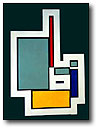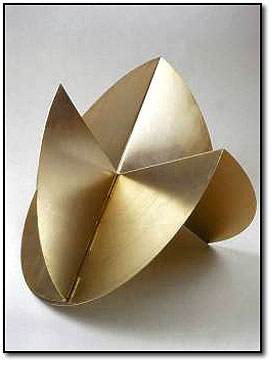Museum of Fine Arts, Houston,
Jun 20, 2004 - Sep 12, 2004
Houston, TX, USA
Inverted Utopias
by Annie Laurie Sánchez
Inverted Utopias: Avant-garde Art from Latin America is more than a "blockbuster" exhibition. It represents a unique opportunity to view works by some of the most important Latin American artists of the 20th century - works that one may never again be privileged enough to see in his or her lifetime. Mari-Carmen Ramírez, Hector Olea, the International Center for the Arts of the Americas, and the MFA Houston have made a major effort to gather these works from collections around the world, with only a few of them belonging to MFAH’s permanent collection. Inverted Utopias is the first United States exhibition of its scale to address the key decades from the 1920s to the 1970s - decades of crucial developments in the vanguard of Latin American Art. Some of the biggest exhibitions of Latin American art at major museums in the past have spanned as many as 30 decades. These kinds of surveys do no service to the viewers or to the artworks, as too much is involved. While the show only straddles a mere six decades, it is flush with some of the most intriguing beautiful and inspiring works from Puerto Rico, Mexico, Central America and South America. The six different groupings of works teem with information and visual delights, any more might be too overwhelming for a visitor to grasp. However, Inverted Utopias is NOT intended as a survey, or as a "full history" of Latin American art of the specified time periods. The exhibition is organized in accordance with the "constellation" system, a system that Ramírez pioneered in the early 1990s as a means of circumventing typical systems of exhibiting based on chronology or nationality that had despective and problematic interpretations concerning the place of Latin American art within art history worldwide. (These systems were the same as those used in the survey exhibitions that lumped together art from the Pre-Columbian cultures with colonial art, folk art and art from the avant-garde periods of various decades.) Ramírez’s approach is not without problems: critics complain that the constellations may imply too much similarity and fail to highlight coexisting differences. In addition, the lack of chronological separation when no less than five decades are involved in a single constellation can be confusing. None-the-less, the system is very effective in causing visitors to look for and identify important avant-garde elements in the works rather than searching for how they represent a culture or time period.
|









